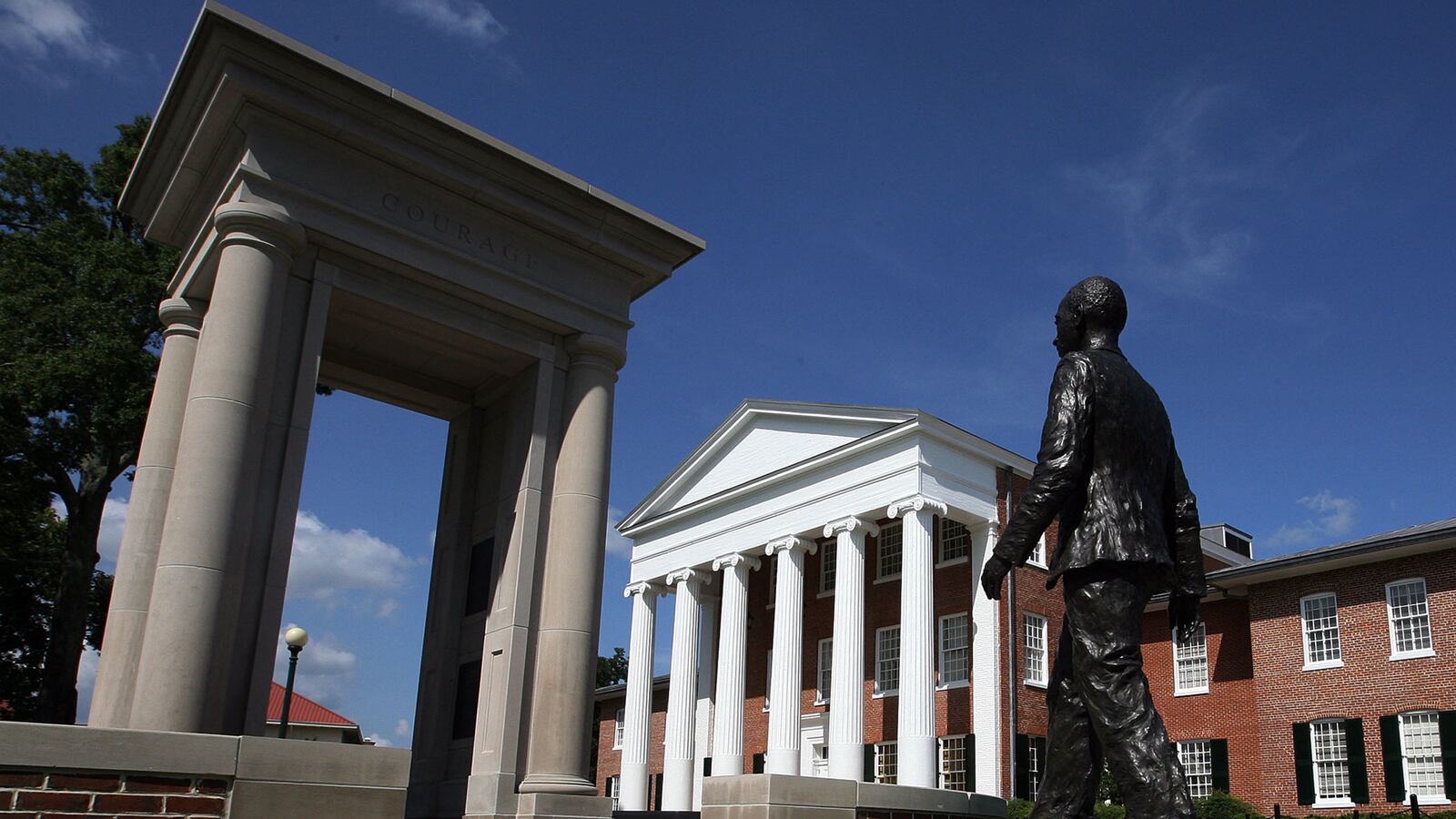
Last weekend, at the University of Mississippi, vandals defaced a statue of James Meredith—who stood against white mobs and the state government to desegregate the school in 1962. According to reports, two white men approached the statue in the early morning and placed a tight noose on its neck. They draped the statue with an early version of the Georgia state flag, which shows the “stars and bars” of the Confederacy.
The message, to the black students of Ole Miss, was straightforward: Go away. We don’t want you here. But 52 years after Meredith went on campus, non-whites are a quarter of µthe student body. They’re not going anywhere.
It should be said that, thanks to an immediate response from the university, local police have several suspects—three freshmen, all of them white males—and all are wanted for questioning.
Given the extent to which this deals directly with the school’s reputation, I have no doubt that it will come to a satisfying conclusion. Those kids will face punishment for their vandalism, and the administration will congratulate itself for its efforts. And indeed, as the New York Times reports, the school’s student establishment has—to its credit—moved to condemn the perpetrators, “Fifteen fraternity presidents vowed in a statement to expel any member who participated in the attack on the statue.”
Of course, this incident is about more than just the statue. It sits in dialogue—of sorts—with the school’s pattern of racist incidents, like the anti-Obama demonstration that followed the 2012 elections, where students burned Obama campaign signs and chanted “the South will rise again.”
As always, these incidents are condemned for having “no place” at Ole Miss. But, sadly, they do, especially given the school’s embrace of Confederate symbols, which it defends as part of its “tradition.” Prominent examples include the Confederate monument near the center of the university, the school mascot—a “Rebel”—and its embrace of “Dixie” as a fight song for football games.
Yes, the school has made tremendous progress towards building a safe environment for its black students. But it’s hard—if not impossible—to reconcile this with the use of Confederate symbols. Most white students at Ole Miss, if they hail from the South, can salvage a history to honor from the CSA (hence slogans like “heritage not hate”). Blacks have the same roots, and they go just as deep—if not deeper. But there’s nothing they can draw from the Confederacy. And if school pride is tied to this kind of Southern “heritage,” then it’s hard to see how African Americans can feel fully comfortable on campus.
What’s more, those symbols can encourage the view that the school is for whites, and whites alone. Put simply, if you’re going to honor the Confederacy on your campus, you shouldn’t be surprised when some students that seriously.
I get the reverence for tradition that defines a place like Ole Miss. It’s a fact of life at the flagship universities of the South, like my alma mater, the University of Virginia. But “tradition” isn’t an unalloyed good, and there are parts of our traditions that we should set aside. Ole Miss is a 21st century campus with the worst of our 19th century symbols. It’s time for a change.






